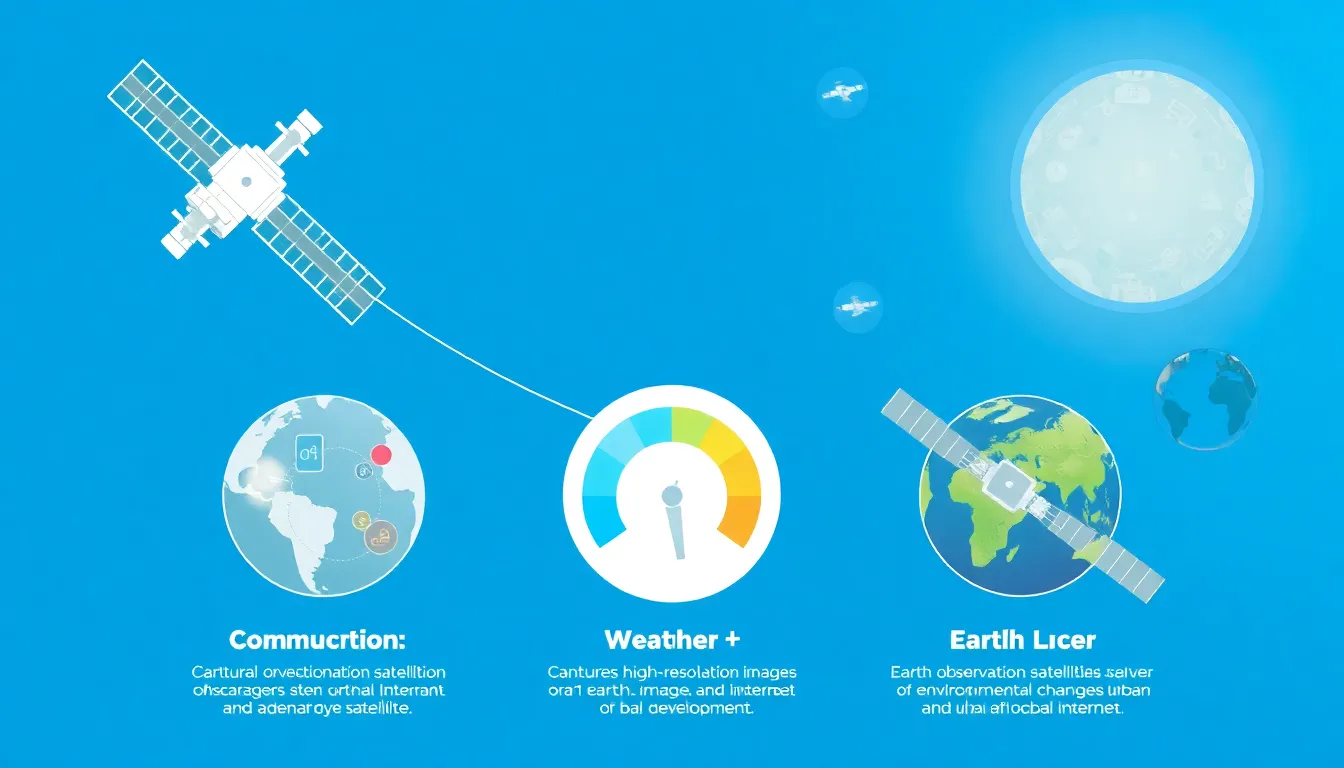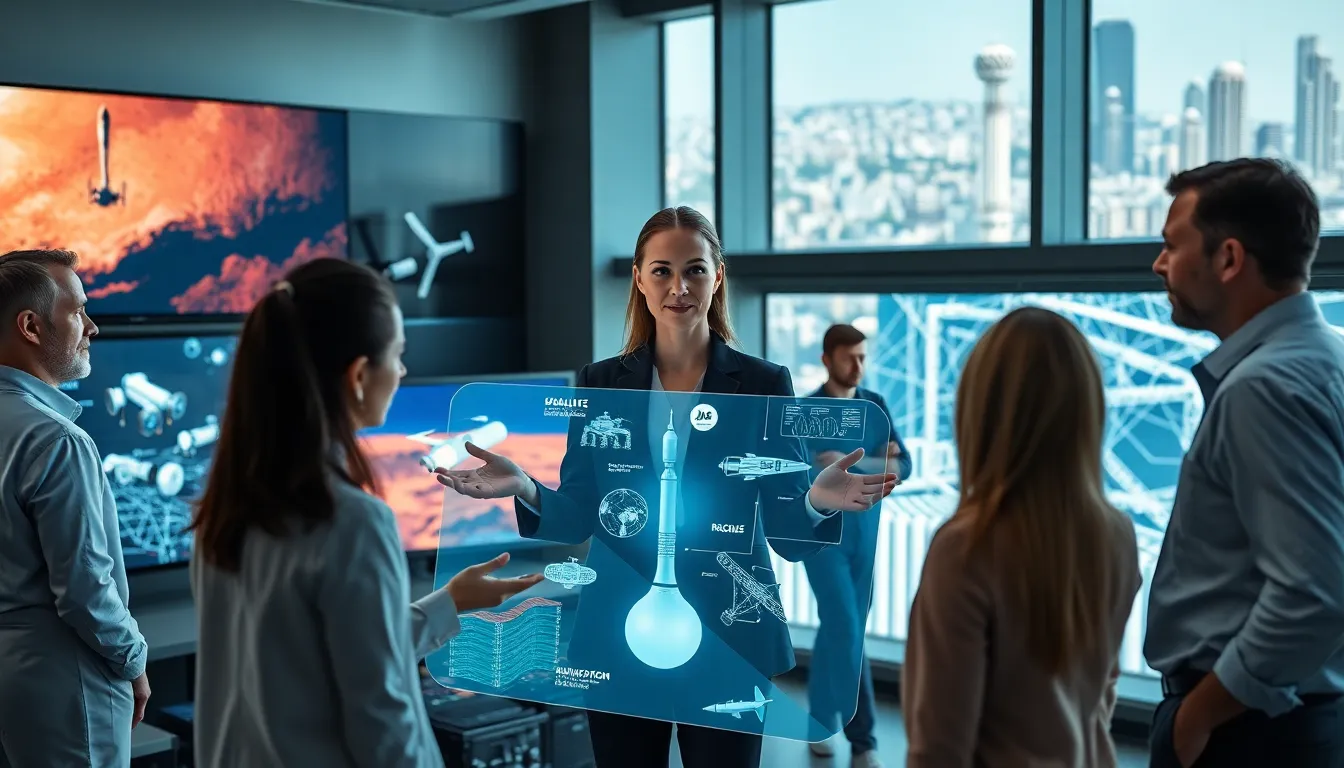When you think about space technology, you might envision astronauts floating around in zero gravity or rockets blasting off into the great unknown. But there’s a whole galaxy of tech innovations that are making space exploration possible and exciting. From satellites that keep us connected to robotic spacecraft roaming Mars, the fascinating examples of space technology are astounding. Wondering what makes the cosmos tick? Buckle up as we jump into some incredible advancements in space tech that are redefining our future.
Table of Contents
ToggleSatellite Technology

Types of Satellites and Their Uses
Satellites come in a variety of shapes and sizes, each serving a unique purpose. Communication satellites help us keep in touch with loved ones across the globe. They’re the unsung heroes behind phone calls, internet browsing, and even streaming our favorite shows. Next up are weather satellites. They hover in the sky, providing critical data about weather patterns, allowing for accurate forecasting, because no one likes getting caught in a rainstorm without an umbrella.
Then, we have Earth observation satellites. Equipped with high-resolution cameras, these amazing machines monitor everything from environmental changes to urban development. Yes, we’re looking at you, deforestation. Each type of satellite plays a crucial role in helping us understand and respond to our planet’s needs.
Advancements in Satellite Communication
Satellite technology is not stagnant. Recent advancements have turned them into faster and more efficient communicators. The rise of high-throughput satellites (HTS) signifies a leap forward, offering much greater data transmission speeds. These satellites can provide internet service to remote regions where ground infrastructures are lacking. Did someone say, “work from anywhere?”
Also, technology like low Earth orbit (LEO) satellite constellations is revolutionizing global internet coverage. Companies like SpaceX’s Starlink are launching thousands of small satellites into orbit to provide reliable and high-speed internet to the most underserved regions. Talk about reaching for the stars.
Robotic Spacecraft
Mars Rovers: Exploring the Red Planet
When it comes to robotic exploration, Mars rovers like Perseverance and Curiosity are at the forefront. These smart little vehicles trundle across the Martian surface, using advanced cameras and sensors to gather data about the planet. They analyze soil samples, search for signs of past life, and send real-time images back to Earth. Ever seen a selfie from another planet?
The thrill lies not just in their exploration but also in their potential to pave the way for human colonization of Mars. If everything goes as planned, you might just see holiday brochures featuring Martian resorts in the not-so-distant future.
Sample Return Missions: Bringing Back Data
NASA’s OSIRIS-REx mission is an exemplary success story for sample return missions. Launched in 2016, it traveled to asteroid Bennu and collected rock samples from its surface. The craft is set to bring these precious gems back to Earth in 2023. This mission isn’t just about collecting rocks: it’s about unraveling the mystery of our solar system’s formation and perhaps finding clues about the origins of life itself. With each sample, we get closer to understanding our cosmic heritage.
Launch Vehicle Innovations
Reusable Rockets: Reducing Costs and Enhancing Access
The world of launch vehicles has seen some revolutionary changes, with reusable rockets taking the spotlight. SpaceX’s Falcon 9 is a perfect example, successfully landing back on Earth after delivering payloads to space. This remarkable innovation reduces launch costs significantly and enables more frequent missions. Could this mean space travel becomes something more than just a dream?
By reusing rockets, companies are tasked with fewer resources each time, unlocking doors for commercial space travel and exploration. Perhaps one day, your vacation could include a quick jaunt to the International Space Station.
Heavy-Lift Launchers: Enabling Deep Space Exploration
For missions beyond Earth’s orbit, heavy-lift launchers like NASA’s Space Launch System (SLS) are essential. Designed to carry substantial payloads, these powerful rockets are capable of sending larger spacecraft deeper into space, including plans for returning humans to the Moon and beyond. The SLS aims to carry the Artemis program’s Orion spacecraft to its lunar destination, building a sustainable presence on the Moon and paving the way for future Mars missions.
Space Suits and Life Support Systems
Technological Advancements in Space Suits
If you think of space suits as mere protective gear, think again. Modern space suits are engineering marvels. NASA’s latest model, the xEMU (Exploration Extravehicular Mobility Unit), is designed to provide astronauts with mobility, durability, and ease of use. With improved life support systems and communications built into the suit, astronauts can focus on their tasks rather than fighting with their gear. An added bonus? The suits are equipped with enhanced thermal controls, keeping astronauts cozy on those chilly spacewalks.
Life Support Systems for Manned Missions
To make manned missions successful, life support systems are key. These systems provide the vital oxygen and manage CO2 levels while taking care of recycling water. Advanced technologies are being developed to make life support systems even more efficient, allowing crews to live and work in space for extended periods. In the future, we may see habitats on Mars fully equipped with these revolutionary life support systems, making Martian expeditions feasible.
Emerging Space Technologies
Space Mining: The Future of Resource Acquisition
Space mining might sound like something straight from a sci-fi movie, but it’s a genuine frontier for innovative technology. Companies like Planetary Resources are investigating ways to extract valuable resources from asteroids. Imagine mining platinum or rare metals without ever needing to dig into our planet’s crust. By harnessing these extraterrestrial resources, humanity could significantly alleviate some of the mining pressure currently placed on Earth.
Artificial Intelligence in Space Operations
Artificial Intelligence (AI) is finding its niche in space operations as well. With its ability to analyze vast amounts of data quickly, AI helps improve mission planning and execution. Also, it aids in onboard systems diagnostics, optimizing spacecraft operations by predicting issues before they arise. Who knew machines could be better coworkers across the cosmos? These emerging technologies are setting the stage for a new era in space exploration.






